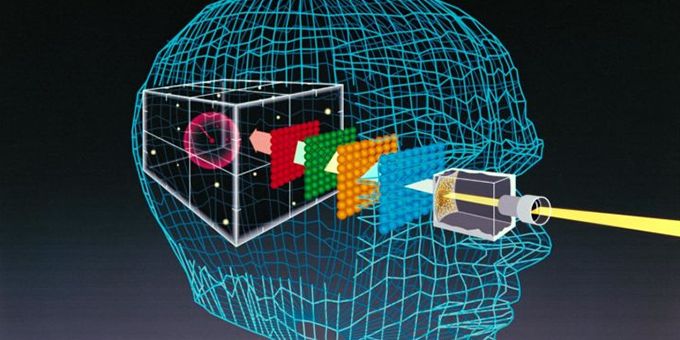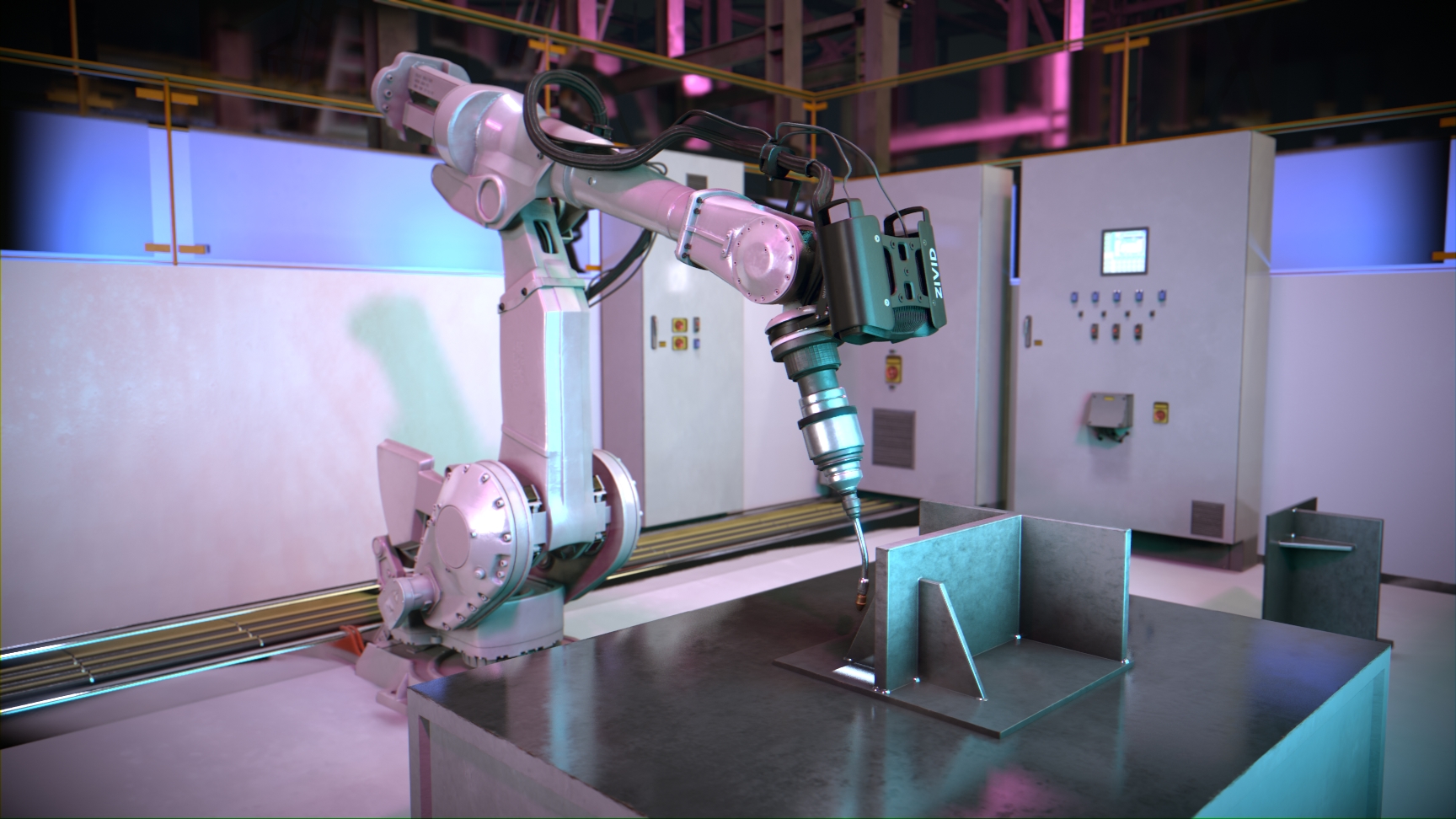Frequently asked questions about robotic vision — answered
Why Robotic Vision Is Crucial for Advancing Accuracy in Production Industries
Robotic vision has emerged as an important component in contemporary production. It empowers devices to assess visual information with remarkable precision. This ability boosts quality assurance and minimizes the likelihood of problems. As markets endeavor for greater efficiency, understanding the ins and outs of robotic vision becomes crucial. The interaction between technology and operational procedures increases vital questions concerning future advancements and their implications. What exists in advance for accuracy in production?
Understanding Robotic Vision Innovation

Enhancing Quality Assurance With Robotic Vision

Enhancing Operational Effectiveness Via Automation

Automating manufacturing processes with robotic vision greatly enhances production rate, permitting for quicker turn-around times. This innovation additionally minimizes error rates, making sure greater accuracy in procedures. In addition, streamlined resource management is achieved, bring about a lot more efficient usage of products and labor.
Enhanced Production Rate
While the integration of robotic vision in manufacturing has actually transformed operational processes, its most considerable advantage hinges on enhanced production rate. By utilizing advanced image processing and real-time data analysis, robotic vision systems can swiftly recognize and respond to production needs. This sped up responsiveness gets rid of hold-ups commonly related to manual assessment and decision-making processes. Furthermore, these systems can operate continuously without exhaustion, ensuring that manufacturing lines maintain high throughput. The capability to detect and deal with concerns instantly additionally streamlines process, allowing makers to maximize result levels (fibre testing equipment). Subsequently, companies take advantage of decreased cycle times and enhanced performance, positioning them competitively in the market. Boosted manufacturing speed, driven by robotic vision technology, eventually leads to boosted operational efficiency across the production landscape
Minimized Error Fees
As production rate increases, preserving precision becomes critical in producing procedures. Robotic vision systems substantially add to minimized mistake prices by supplying precise measurements and real-time analyses. These advanced systems use high-resolution cams and sophisticated algorithms to discover issues, misalignments, or disparities in items throughout assembly. By automating quality important source assurance, makers can promptly determine and fix issues that human assessors may overlook. This not just reduces waste yet additionally enhances total item high quality. In addition, the integration of robotic vision reduces variability in production, ensuring that each product satisfies rigid requirements. Subsequently, manufacturers experience less costly recalls and boosted customer fulfillment, inevitably resulting in an extra effective and successful operational design.
Structured Resource Administration
Effective source monitoring is crucial for optimizing functional performance in manufacturing, especially when incorporated with robotic vision systems. These systems boost the capacity to keep track of and designate sources accurately, making certain that products and labor are made use of successfully. By utilizing advanced aesthetic innovations, producers can identify inefficiencies in actual time, minimizing waste and improving manufacturing timelines. On top of that, robotic vision enables accurate inventory monitoring, minimizing the risk of overstocking or stockouts. Automation of these procedures not only streamlines operations but also allows human workers to concentrate on higher-value tasks, cultivating advancement and productivity. As a result, firms can achieve significant expense savings while preserving premium standards, eventually placing themselves much more competitively in the industry.

Decreasing Human Error in Production Processes
Human error continues to be a substantial challenge in making processes, frequently bring about expensive blunders and ineffectiveness. In settings where accuracy is paramount, also small gaps in judgment can cause faulty items or delays in manufacturing timetables. Robotic vision systems can minimize these threats by giving exact and regular tracking of making procedures. By automating jobs such as quality assurance and setting up line examinations, these systems minimize the reliance on human oversight, thus reducing the capacity for errors.Moreover, robotic vision technology boosts data accuracy, permitting real-time modifications based on aesthetic responses. This capacity guarantees that any discrepancies from developed standards are quickly identified and dealt with, even more decreasing the likelihood of Recommended Reading blunders. As makers significantly adopt robotic vision, they can anticipate not only to improve precision and effectiveness yet likewise to promote a more secure working setting by alleviating the pressure on human operators.
The Function of Artificial Knowledge in Robotic Vision
Expert system substantially improves robotic vision by using maker learning algorithms Your Domain Name and progressed image handling strategies. These modern technologies allow robots to analyze visual data with better precision, improving both efficiency and accuracy in making settings. Therefore, the combination of AI into robotic vision systems represents a pivotal innovation in automation.
Machine Learning Algorithms
Artificial intelligence algorithms are revolutionizing robotic vision in production by enabling devices to analyze and evaluate visual information with remarkable accuracy. These algorithms enable robotics to find out from large datasets, adapting to new circumstances and boosting their performance over time. By leveraging methods such as supervised and not being watched discovering, robotic systems can determine patterns and anomalies in real-time, which improves quality assurance and minimizes waste. Furthermore, artificial intelligence assists in better decision-making procedures, enabling robotics to enhance their actions based upon found out experiences. As these algorithms evolve, they equip robotic vision systems to do significantly complicated jobs, ultimately driving efficiency and accuracy in producing procedures. The assimilation of device learning consequently plays a pivotal duty in the innovation of robotic vision technology.
Photo Handling Methods
Enhancing the capacities of robotic vision, photo handling methods play an essential role in making it possible for systems to interpret visual information effectively. These techniques involve formulas that improve picture top quality, essence relevant attributes, and acknowledge patterns within visual information. By utilizing techniques such as edge discovery, segmentation, and things acknowledgment, robotic systems can recognize and classify parts with remarkable accuracy. The combination of expert system additionally magnifies these strategies, permitting for flexible knowing and improved decision-making in vibrant environments. Because of this, robotic vision systems can not only identify problems yet also enhance procedures, bring about raised efficiency and accuracy in manufacturing. The continuous innovation of photo handling methods remains critical to the advancement of robotic vision in commercial applications.
Future Patterns in Robotic Vision for Production Industries
As sectors significantly focus on effectiveness and precision, the advancement of robotic vision technology is established to transform making processes significantly. Future fads indicate significant improvements in artificial intelligence and artificial intelligence assimilation within robotic vision systems. These improvements will improve real-time decision-making abilities, enabling robots to adapt to varying problems autonomously. The adoption of 3D vision systems is prepared for to enhance, offering more precise spatial understanding and things acknowledgment. Collaborations between robotics and human employees might additionally evolve, with advanced vision systems assisting in much safer and a lot more efficient communications. Furthermore, making use of side computing will likely enable faster data processing, minimizing latency and enhancing functional responsiveness. As these fads unfold, the manufacturing sector stands to benefit from boosted top quality control, reduced waste, and streamlined process, eventually causing enhanced competition in a rapidly changing market.
Regularly Asked Inquiries
Just How Does Robotic Vision Differ From Traditional Machine Vision Systems?
Robotic vision incorporates sophisticated formulas and real-time handling, allowing dynamic analysis and communication with settings. In contrast, conventional device vision mostly focuses on fixed photo capture and evaluation, restricting versatility and responsiveness in complicated production circumstances.
What Industries Benefit Most From Robotic Vision Innovation?
Different markets profit significantly from robotic vision innovation, consisting of automobile, electronics, and food handling. These sectors take advantage of enhanced precision, efficiency, and versatility, inevitably enhancing manufacturing top quality and minimizing functional costs through advanced automation solutions.
Can Robotic Vision Solutions Be Integrated With Existing Manufacturing Devices?
Robotic vision systems can indeed be integrated with existing manufacturing tools. This integration enhances operational performance, enabling seamless partnership in between traditional machinery and progressed aesthetic modern technology, eventually improving total manufacturing procedures and outcomes.
What Are the Prices Related To Executing Robotic Vision Solutions?
The prices connected with executing robotic vision solutions differ significantly, influenced by variables such as system complexity, required software program, hardware parts, combination with current equipment, and continuous upkeep expenses, ultimately impacting general roi.
How Do Maintenance and Support for Robotic Vision Systems Job?
Upkeep and support for robotic vision systems include normal software application updates, hardware assessments, and troubleshooting. optical fibre diameter analyser. Vendors typically supply service arrangements, making sure prompt assistance and decreasing downtime to keep peak performance and integrity in industrial applications